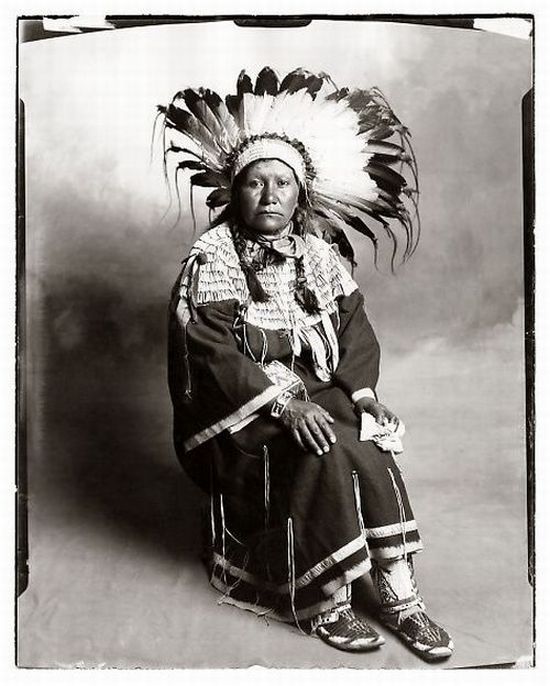|
|
Native Americans
|
Since the end of the 15th century, the migration of Europeans to the Americas, and their importation of Africans as slaves, has led to centuries of conflict and adjustment between Old and New World societies. Europeans created most of the early written historical record about Native Americans after the colonists' immigration to the Americas. Many Native Americans lived as hunter-gatherer societies and told their histories by oral traditions. In many groups, women carried out sophisticated cultivation of numerous varieties of staple crops: maize, beans and squash. The indigenous cultures were quite different from those of the agrarian, proto-industrial, mostly Christian immigrants from western Eurasia. Many Native cultures were matrilineal; the people occupied lands for use of the entire community, for hunting or agriculture. Europeans had patriarchal cultures and had developed concepts of individual property rights in land that were extremely different.
The differences in culture between the established native Americans and immigrant Europeans, as well as shifting alliances among different nations of each culture through the centuries, caused extensive political tension, ethnic violence and social disruption. The American Indians suffered high fatalities from the contact with infectious Eurasian diseases, to which they had no acquired immunity. Epidemics after European contact caused the greatest loss of life for indigenous populations. Estimates of the pre-Columbian population of what today constitutes the U.S. vary significantly, ranging from 1 million to 18 million.
After the colonies revolted against Great Britain and established the United States of America, President George Washington and Henry Knox conceived of the idea of "civilizing" Native Americans in preparation for assimilation as United States citizens. Assimilation (whether voluntary as with the Choctaw, or forced) became a consistent policy through American administrations. During the 19th century, the ideology of Manifest destiny became integral to the American nationalist movement. Expansion of European-American populations to the west after the American Revolution resulted in increasing pressure on Native American lands, warfare between the groups, and rising tensions. In 1830, the U.S. Congress passed the Indian Removal Act, authorizing the government to relocate most Native Americans of the Deep South from their homelands east of the Mississippi River to the West, to accommodate European-American expansion from the coastal United States. Government officials thought that by decreasing the conflict between the groups, they could help the Indians survive. American Indians have continued to live throughout the South. They have organized and been recognized as tribes since the late 20th century by several states and, in some cases, by the federal government.
The first European Americans to encounter the western tribes were generally fur traders and trappers. There were also Jesuit missionaries active in the Northern Tier. As United States expansion reached into the American West, settler and miner migrants came into increasing conflict with the Great Plains tribes. These were complex nomadic cultures based on using horses and traveling seasonally to hunt bison. They carried out strong resistance to United States incursions in the decades after the American Civil War, in a series of "Indian Wars", which were frequent up until the 1890s. The coming of the transcontinental railroad increased pressures on the western tribes. Over time, the U.S. forced a series of treaties and land cessions by the tribes, and established reservations for them in many western states. U.S. agents encouraged Native Americans to adopt European-style farming and similar pursuits, but the reservation lands were often too poor and dry to support such uses.
|
|









